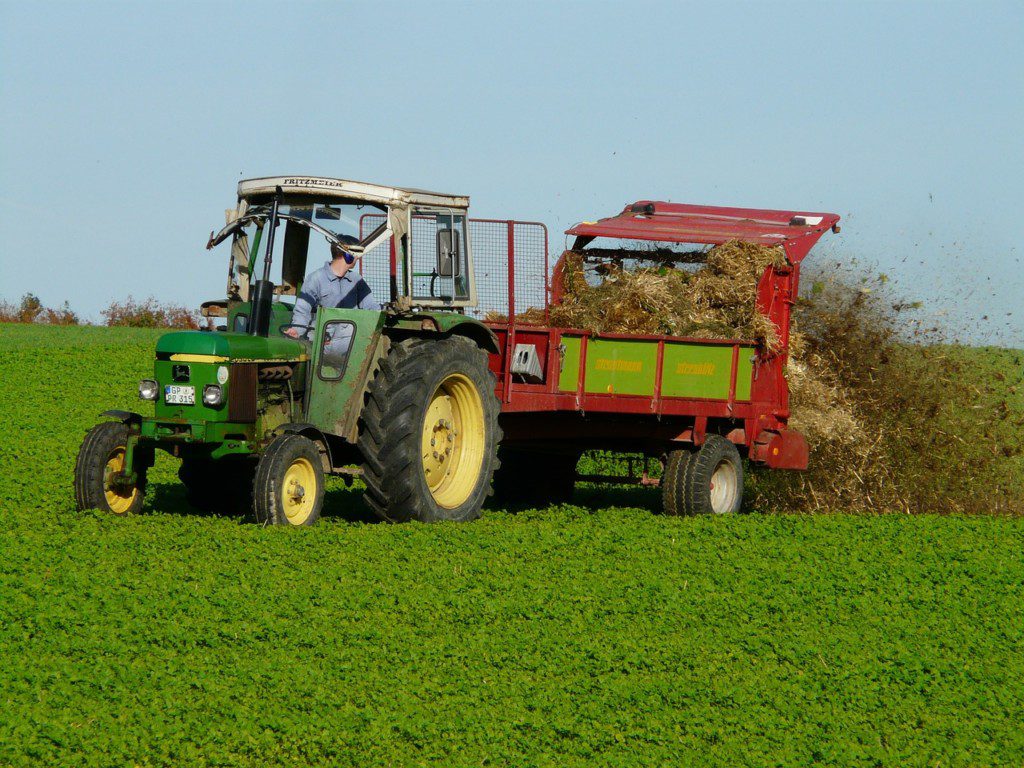06/13/2023 | Agriculture and Farming | 8 MINUTE READ
The Future of Farming: Exploring Precision Agriculture

With each passing day, technological advancements are made that help industries move into the future and develop more efficient processes. These advancements also apply to the agriculture industry. By implementing a new technique known as precision agriculture, farmers can reduce the amount of fertilizer and water they use, which saves resources.
This form of agriculture uses smart technology to deliver efficiencies that would otherwise be nearly impossible. While farmers are mainly choosing to adopt precision agriculture because it saves them a considerable sum of money, there are also ample conservation benefits that farmers gain access to.
Over the past few decades, water has become an increasingly scarce resource that must be protected. Farmers are also presented with unpredictable seasons and changing weather patterns, which make it more difficult to effectively manage and conserve water. Precision agriculture is the solution to these problems. This guide explores precision agriculture technology and how it’s set to transform the farming industry.

What is Precision Agriculture?
Precision agriculture, also known as precision farming or satellite agriculture, is a type of farming management concept that’s designed to leverage technology for the purpose of measuring, observing, and responding to variances that occur within fields. When performed correctly, this technology is capable of providing soil and crops with the exact inputs they require to maintain optimal sustainability, environmental protection, health, profitability, and productivity. Without this technology in place, it would be too cost-intensive to reach these inputs.
There are many factors that play a role in managing crops with a precision agriculture system, which include terrain, weather, soil type, yield data, and plant growth. Precision agriculture uses specialized equipment, IT services, and software to take all of these factors into account. Once you’ve implemented this solution, you can also obtain real-time information about how the soil, crops, and surrounding air are faring.
The additional data that can be gathered with this system includes labor costs, equipment stock, and local weather predictions. Precision agriculture is capable of collecting real-time data through sensors in fields that can measure the soil’s temperature and moisture content. These same metrics can be measured in the surrounding air. It’s also possible for farmers to use drones and satellites to gather real-time imagery of specific plants.
Key Trends in Precision Agriculture for 2022
The best aspect of integrating precision agriculture into your farming practices is that this system can be continuously improved upon based on additional technological advancements. For instance, new autonomous solutions are set to be made in the coming years.
These advancements will occur with machine autonomy. In fact, an industrial technology company known as Trimble is set to perform additional integration of machine autonomy into their operational workflows. They announced in 2021 that they would eventually be switching over to fully automated systems. It’s also believed that machines will be able to use predictive data through artificial intelligence to control disease and pests, harvest crops, and determine where the best locations are for planting crops.
Over the next year, there should be promising innovations when it comes to precision agriculture. new companies and startups are being formed on a daily basis, many of which focus on developing climate-friendly and intelligent solutions that help drive sustainability in the industry.
Another precision agriculture trend that you should be on the lookout for involves the impact of Internet of Things (IoT) technology. This technology delivers operational connectivity in a manner that’s far beyond anything else that farmers have access to. All of the sensors, software, and technology you implement with your precision agriculture system will be connected with IoT functionality.
In the coming year, there should also be significant advancements in correction services and precise positioning solutions, which will help improve precision agriculture. Regardless of the crop you’re planting or vehicle you’re using, these services should facilitate high-level accuracy down to the centimeter.
As touched upon previously, there are numerous environmental benefits associated with precision agriculture, the primary of which is that it allows you to reach your sustainability objectives via data-driven approaches. Another notable advantage of this solution is the ability to incorporate carbon sequestration practices in farming operations to substantially reduce your carbon footprint. Carbon sequestration involves trapping carbon emissions without releasing them into the atmosphere. If sequestration is effectively incorporated into your operations, you should notice an improvement in yields and field health.
The agricultural innovations that are being developed at the moment aren’t necessarily limited to certain areas of the world. Many of the companies and corporations that are focusing on improving precision agriculture technology serve customers across more than 100 countries. The spread of this technology should begin to reach emerging regions throughout the Asia Pacific region and South America during the course of 2023.
Water has become one of the most valuable resources in the world, which is why many of the advancements in precision agriculture focus on making it easier to manage and conserve these resources. Effective water management solutions can help you enhance your operations and save money on a long-term basis.
Customers are taking a greater interest in understanding the origin and cultivation practices of the food they consume, which is something that modern label readers are capable of accommodating. Precision agriculture makes it easier for you to show customers how you grew your crops.

Benefits and Challenges of Precision Agriculture
Before you implement precision agriculture on your farm, you should understand the benefits and challenges that come with this technology. Once data has been collected with this technology, predictive analytics software will use the data to give you information that can be helpful when determining optimal planting times, crop rotation, soil management, and harvesting times.
It’s possible for agricultural control centers to use the imaging input and sensor data they receive alongside other data to help farmers find fields that need to be treated. If these fields require more fertilizers, water, or pesticides, you’ll know exactly how much to apply. In this scenario, you’ll find it easier to avoid using too many resources while also keeping runoff at bay. Additional benefits include better decision-making, a lower environmental impact, and increased efficiency.
While there are many reasons why you should use this technology, there are also a few issues that you must navigate. Likely the most notable challenge involves data management. Precision agriculture sensors provide you with an exceedingly high amount of data, which can be overwhelming to manage. You’ll need to find a way to parse the data to use only the most relevant information.
A unique challenge that you’ll face is the need to integrate all of the data you receive from different sources. Many different types of data sets will be sent to you. In order to reach optimum efficiency, these data sets must work together to deliver the results you’re looking for.
When using precision agriculture, you’ll be tasked with paying a significant sum of money to acquire the necessary technology, which means that the upfront investment is large. The software and equipment that are required for precision agriculture are oftentimes expensive. Additional resources must be spent to train your employees on using this technology effectively. Even though there are several challenges associated with precision agriculture, it’s expected to become increasingly popular among farmers who are searching for ways to optimize their operations.
The Future of Farming with Precision Agriculture
The future of farming with precision agriculture is just as exciting as the most recent developments. Precision agriculture has the potential to transform farming practices, address sustainability challenges in the agriculture industry, and increase productivity. Incorporating this technology gives you the opportunity to be at the forefront of the industry as it progresses in the years to come.
Whether you’re thinking of installing precision agriculture technology now or waiting for your budget to accommodate the new expenditures, you should take steps to remain informed about the emerging trends and technologies that will help you leverage the benefits of precision agriculture. By taking the right approach, you should notice a sizable reduction in your farming expenses.
When you’re ready to optimize your operations and adopt precision agriculture practices, partner with Trimble for more efficient adoption of this technology. This company specializes in connecting farmers with precision farming solutions, which include hardware and software. These solutions will meet your needs and should help you address the latest trends in the industry.

Conclusion
Precision agriculture is revolutionizing the farming industry at a moment when it’s experiencing many challenges that are otherwise difficult to navigate. Utilizing this technique gives you the ability to leverage data, innovation, and technology in a manner that enhances sustainability, profitability, and efficiency. If you take steps to remain informed about the latest agriculture trends and partner with companies like Trimble, you’ll be able to harness the power of precision agriculture to more effectively shape the future of farming.
Posted by Dominic O'Donnell on June 13, 2023
Sensorex is a global leader in the design and manufacture of quality sensors for water quality and process applications. The company offers more than 2000 sensor packages for pH, ORP, conductivity, dissolved oxygen, free chlorine, chlorine dioxide, UV transmittance and other specialty measurements, as well as a full line of sensor accessories and transmitters. Its expert technical support engineers solve analytical sensor challenges with custom designs and off the shelf products.




